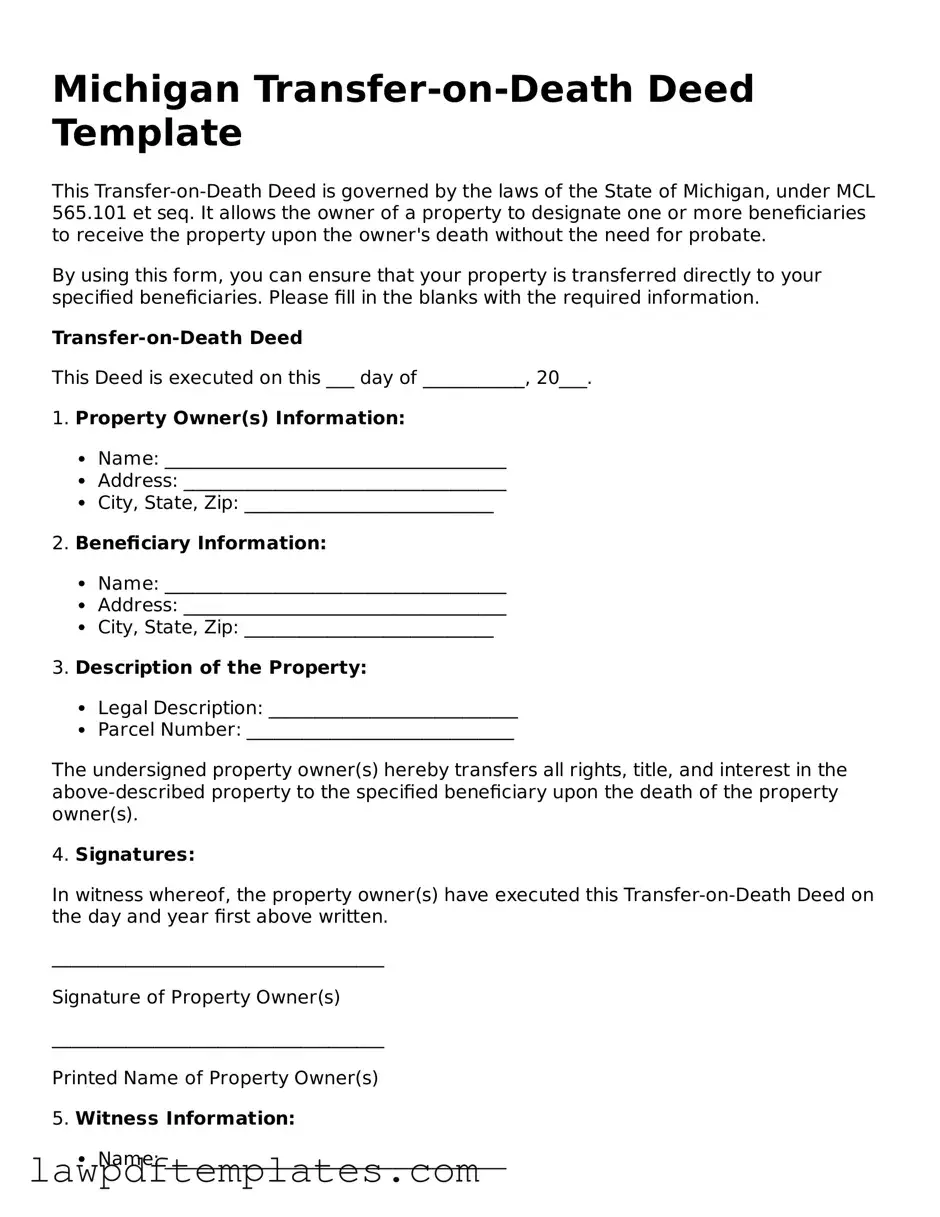Michigan Transfer-on-Death Deed Template
This Transfer-on-Death Deed is governed by the laws of the State of Michigan, under MCL 565.101 et seq. It allows the owner of a property to designate one or more beneficiaries to receive the property upon the owner's death without the need for probate.
By using this form, you can ensure that your property is transferred directly to your specified beneficiaries. Please fill in the blanks with the required information.
Transfer-on-Death Deed
This Deed is executed on this ___ day of ___________, 20___.
1. Property Owner(s) Information:
- Name: _____________________________________
- Address: ___________________________________
- City, State, Zip: ___________________________
2. Beneficiary Information:
- Name: _____________________________________
- Address: ___________________________________
- City, State, Zip: ___________________________
3. Description of the Property:
- Legal Description: ___________________________
- Parcel Number: _____________________________
The undersigned property owner(s) hereby transfers all rights, title, and interest in the above-described property to the specified beneficiary upon the death of the property owner(s).
4. Signatures:
In witness whereof, the property owner(s) have executed this Transfer-on-Death Deed on the day and year first above written.
____________________________________
Signature of Property Owner(s)
____________________________________
Printed Name of Property Owner(s)
5. Witness Information:
- Name: _____________________________________
- Address: ___________________________________
This deed must be recorded with the County Register of Deeds in the county where the property is located to be effective.
